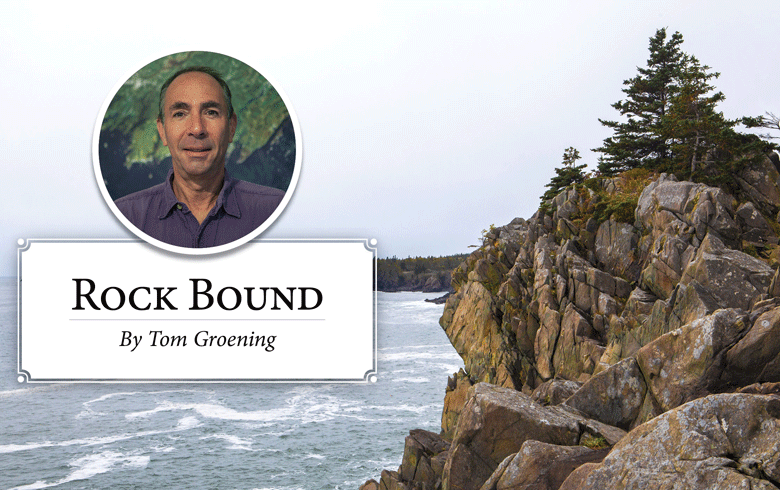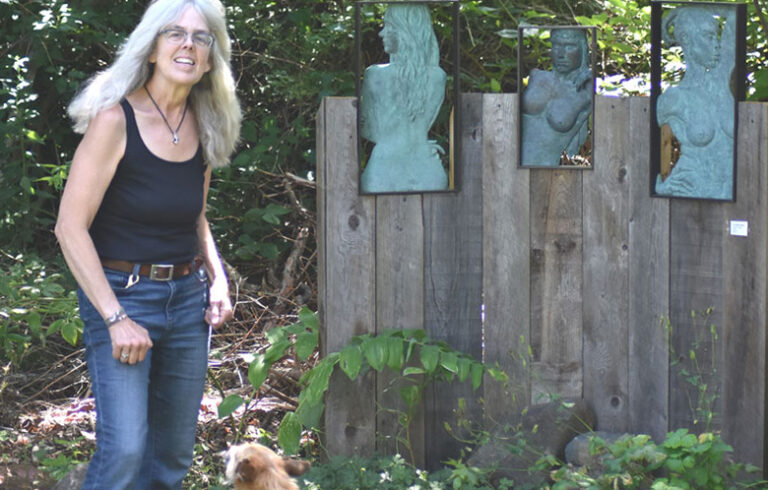On a recent rainy day, I was able to indulge two interests—history and journalism. I was researching 1980s history for a story for our annual Island Journal about working waterfront access in Portland.
Those who were here then will remember the turning point moment when condos—large, four-story structures—rose on Central Wharf, a key access point for fishermen. The very tangible, very visible development silenced the “It can’t happen here” refrain.
My research took me to the University of Maine’s Fogler Library where the late Maine Times archives are available on microfilm. I felt like a character in a murder mystery movie, slowly advancing the 35-millimeter film through the reader, squinting at the screen.
Maine’s daily newspapers were happy to give paper companies, textile mills, and shoe factories a pass…
I had a specific story in mind, though I was only guessing that it ran in the mid-1980s. The cover of one edition of Maine Times featured a photo of those condos, and the story inside, as I remember it, told how they got there. Sadly, after almost three hours, I didn’t find the story I saw in my mind’s eye, but the trip down memory lane was interesting.
Maine Times was launched in 1968 by Peter Cox and John Cole and it self-identified as alternative journalism. Its tagline was “Maine’s Weekly Journal of News and Opinion,” but it was so much more. The short, and probably over-generalized version of the story is that Maine’s daily newspapers were happy to give paper companies, textile mills, and shoe factories a pass on environmental and labor failings, and in fact saw themselves as keepers of the status quo.
As the back-to-the-land movement took shape, many disillusioned young people came here and brought their political values with them. Maine Times stepped into a very deep and wide niche.
My wife and I came to Maine in 1983 for a teaching job at a private boarding school. The pay was awful, but we got a free apartment and could eat at the dining hall when school was in session. The first Christmas we were there our “bonus” was a subscription to Down East magazine.
I loved it. The stories and beautiful photography introduced us to the places we would explore and come to love. We learned about the land we bought in Belfast through an ad in Down East.
I first saw Maine Times a few years later and remember reacting as if I’d been seeing only the pretty front yard, and finally looking out the back window to see all sorts of ugliness, conflict, and degradation. In some ways, the publications were two sides of the same coin.
Maine Times typically featured an in-depth cover story, and its timing was often right on the money, tackling an issue just as it came to a boil. But it also included good columns, excellent art and film reviews, environmental briefs, economic news, and top-notch photography.
Sometimes, the 2,500-word stories about how the state was doing a poor job regulating the insurance industry, or an equally long piece on the inner chaos at some paper company, had my eyes glazing over. But I never stopped reading it.
And I still enjoy Down East. Davis Thomas was editor when I first saw it, and then Dale Kuhnert took over in the early 1990s. He had a knack for finding a fresh, engaging way to look at a town or region, and his writers acknowledged those communities’ challenges. Still, you’d never see a mobile home or a collection of junked cars in the magazine.
Paul Doiron, now a successful mystery novelist, took the helm, followed by Kathleen Fleury. Faced with the bread-and-butter real estate advertising going to the internet and a readership aging out, they tried to bring an edge the magazine, though I suspect younger folks weren’t biting. But they both brought issues into the magazine that never would have been explored there before, and that made for a more informed readership.
Current editor Brian Kevin seems to have hit a sweet spot, innovating here and there—having Martha Stewart be a guest editor—while also including the traditional history pieces and the more recent mainstay of food and drink stories.
Maine Times stumbled into the late 1990s and early 2000s under new owners and finally closed. One reason the statewide weekly sputtered is that the dailies caught up, each hiring environmental reporters and other specialty beat writers. David Platt, who edited The Working Waterfront and Island Journal for nearly two decades and worked at Maine Times for years before joining the Island Institute, was the Bangor Daily News’ second environmental reporter.
These two publications did Maine proud, and their existence spoke, and speaks, to two realities—Maine is beautiful, and summer visitors aren’t being fooled into being smitten by it. And Maine also has deep economic and environmental fissures that need to be plumbed by a robust press.
Tom Groening is editor of The Working Waterfront. He can be reached at: tgroening@islandinstitute.org.





